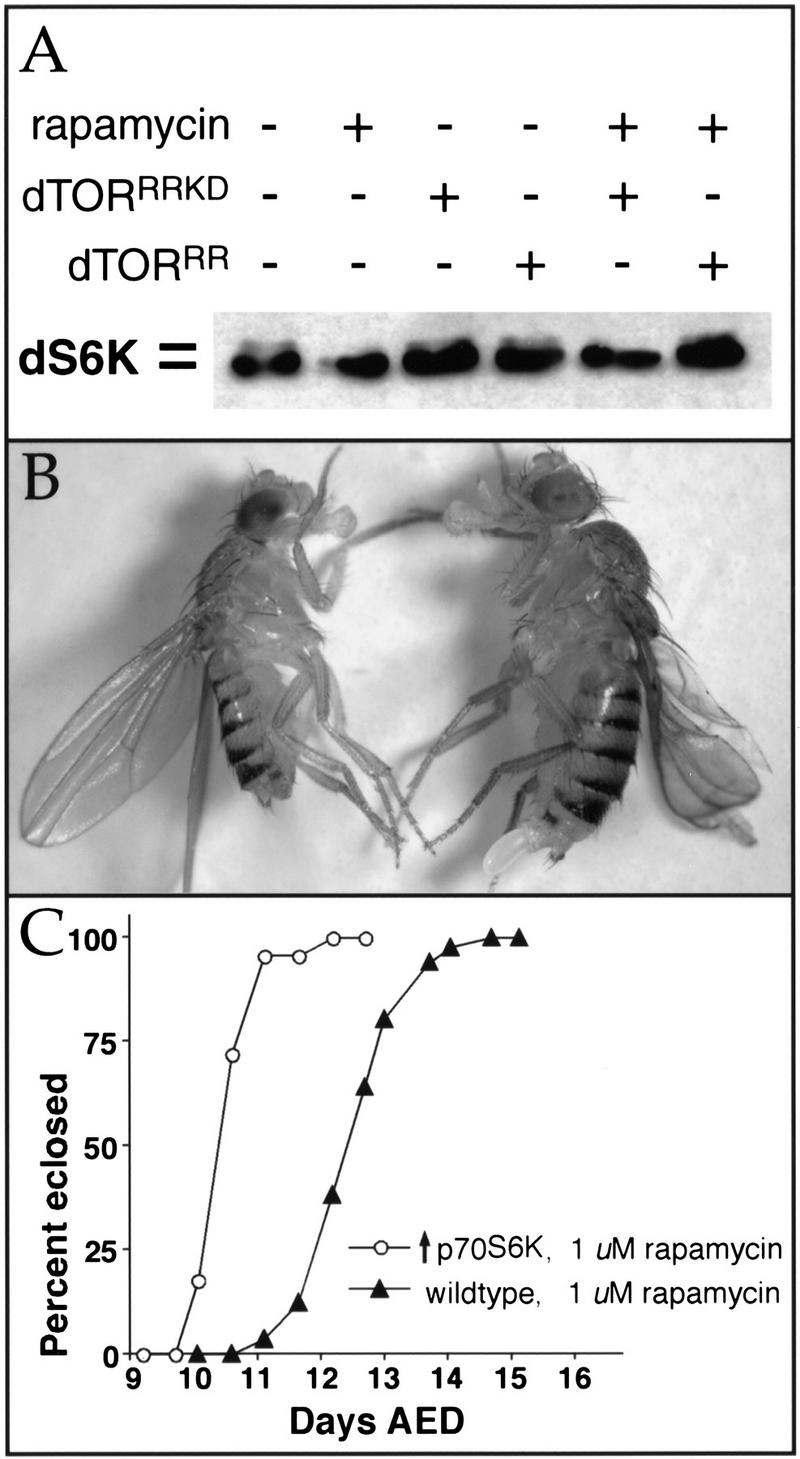Figure 6.
dTOR interacts with dS6K. (A) Immunoblot of extracts from Drosophila S2 cells transfected with HA-tagged dS6K, visualized with anti-HA antibodies. dS6K migrates as a doublet, and the slower migrating band (top), which represents phosphorylated dS6K, is abolished by treatment with rapamycin (lane 2; Stewart et al. 1996). Phosphorylation of dS6K is maintained in the presence of rapamycin when dTORS1956T (dTORRR, lane 6) but not kinase-inactive dTORS1956T (dTORRRKD, lane 5) is cotransfected with dS6K. (B) Constitutive expression of activated human p70S6K1 rescues dTOR flies to viability. Genotypes: (Left) dTORP2 UAS-p70S6K1-D4/dTORP1; Act5c-Gal4/+; (right) dTORP2 UAS-p70S6K1-D4/CyO; Act5c-Gal4/+. Note that the rescued dTOR fly (left) is smaller than the control. (C) Constitutive expression of dS6K provides rapamycin resistance. UAS-dS6K/+; Act5c-Gal4/+ flies cultured with 1 μM rapamycin eclose ∼3 d earlier than wild-type controls.

